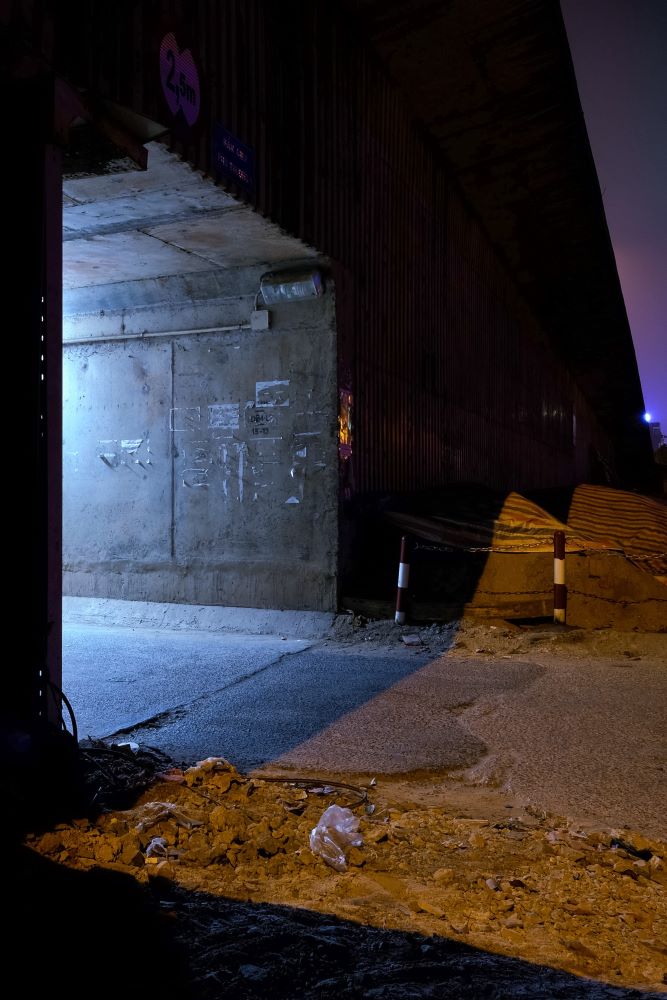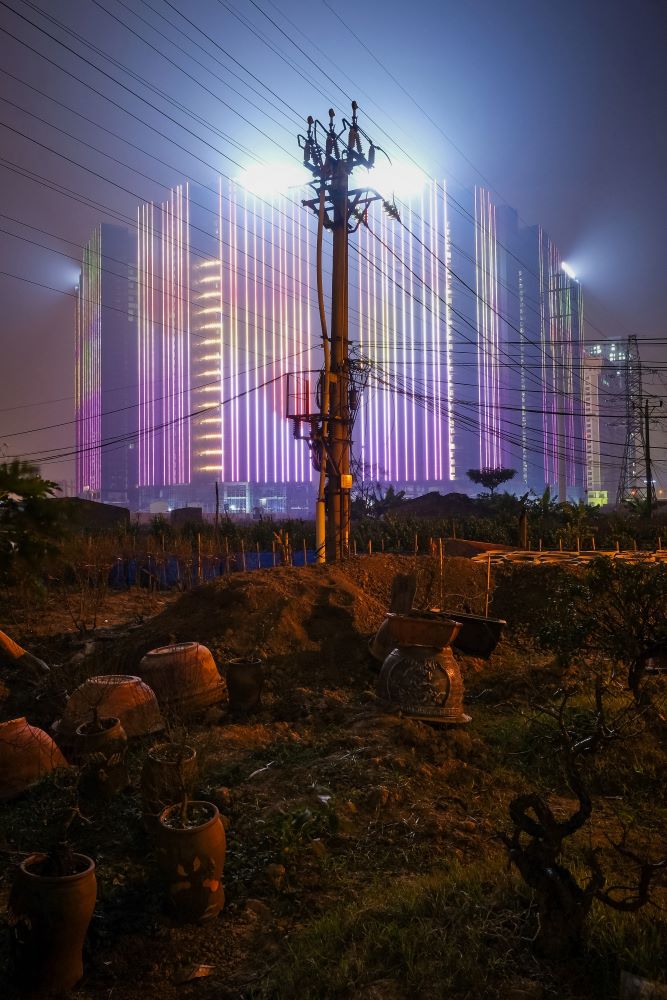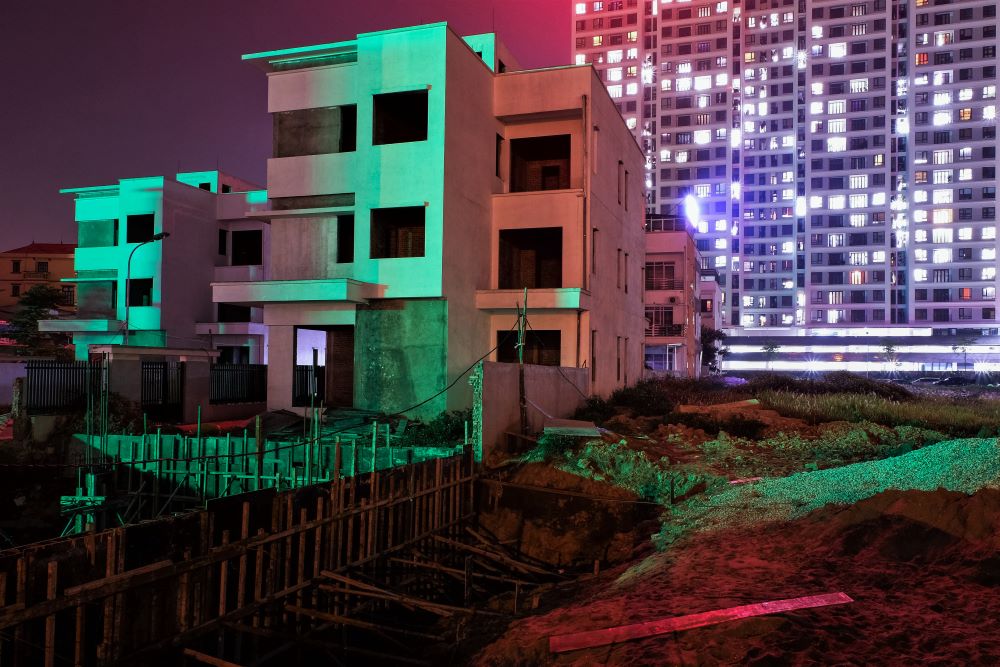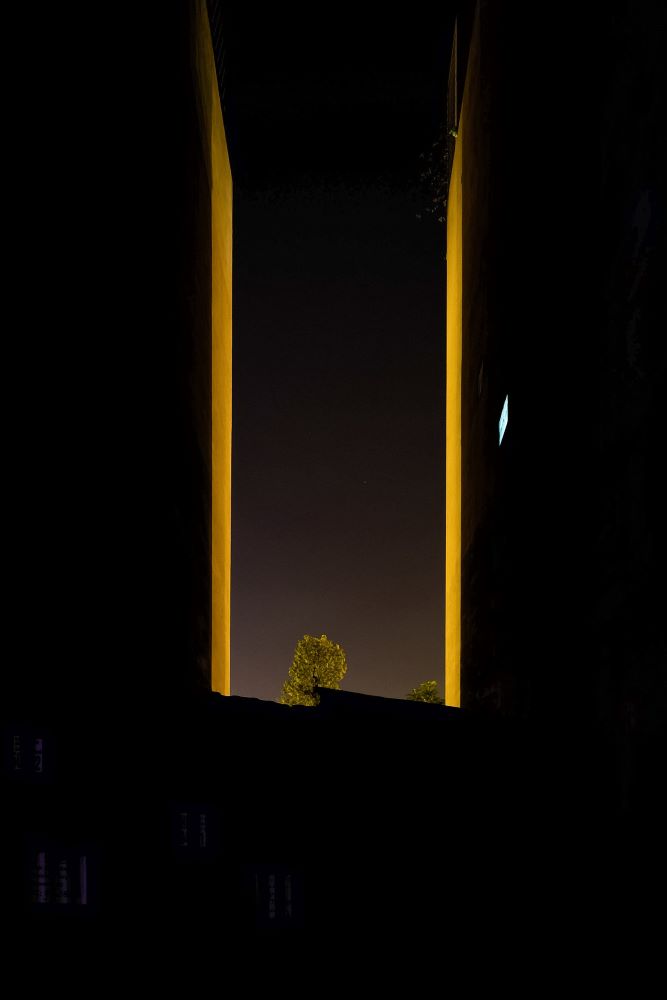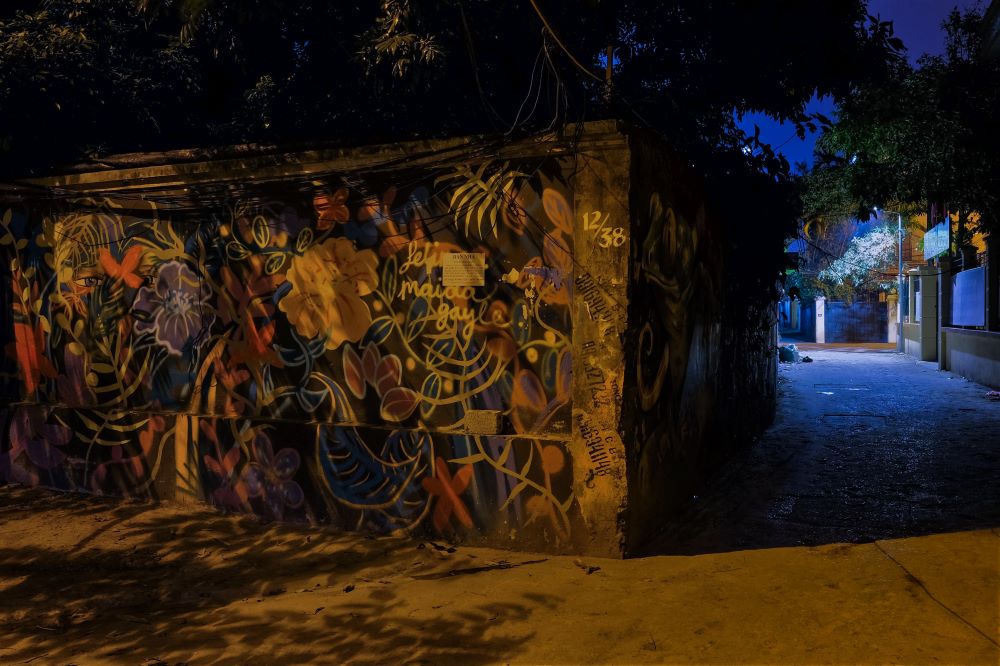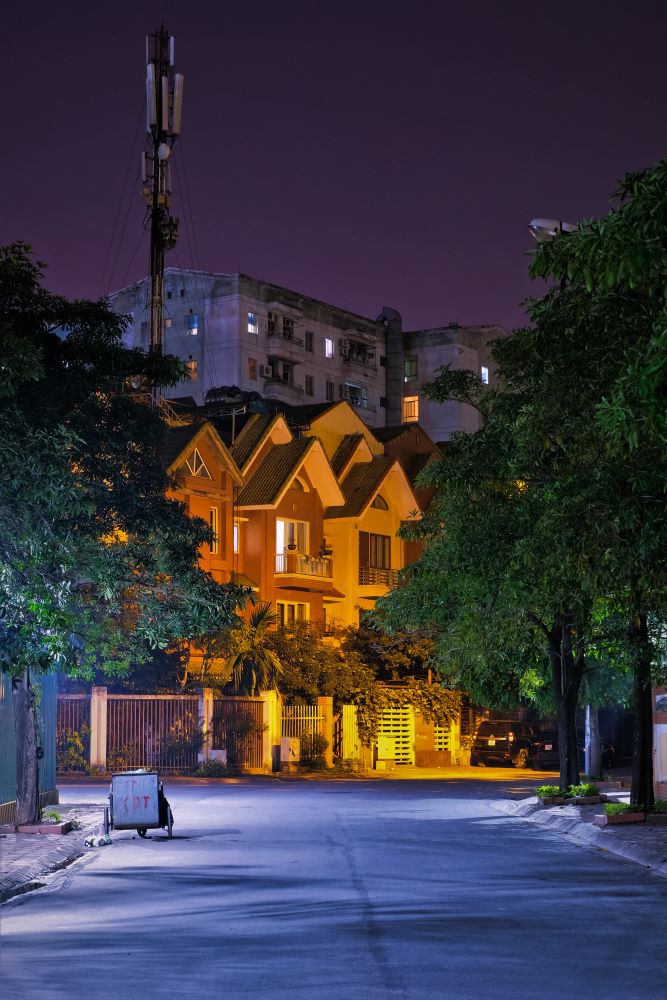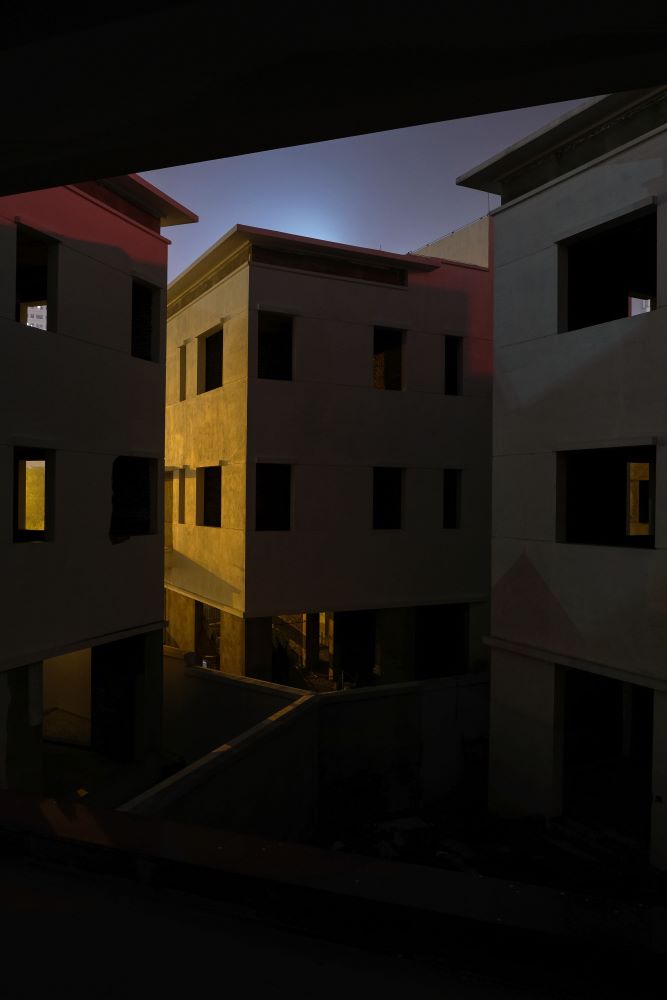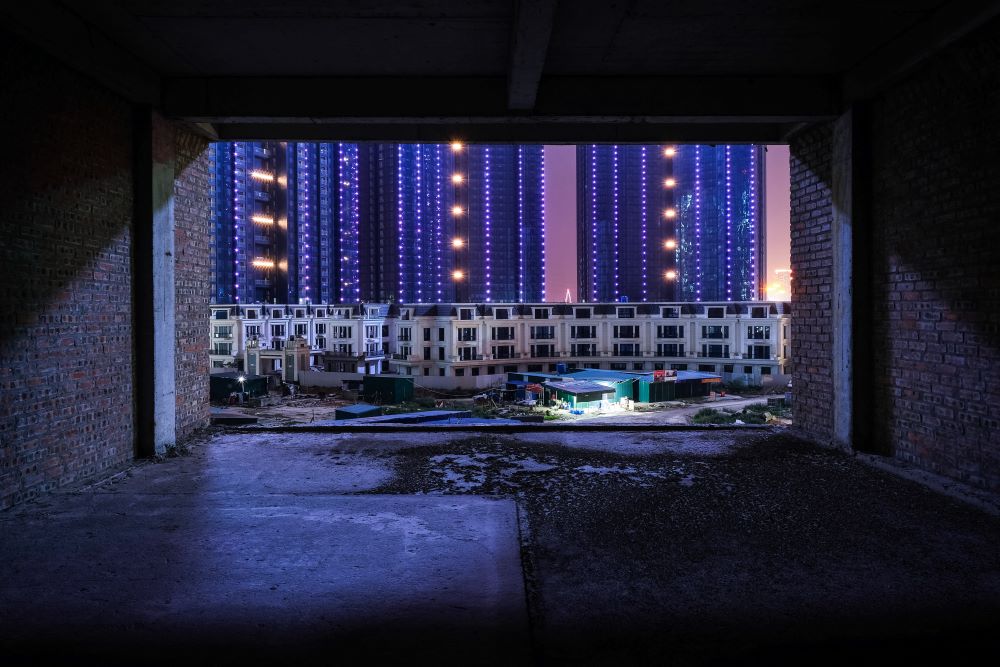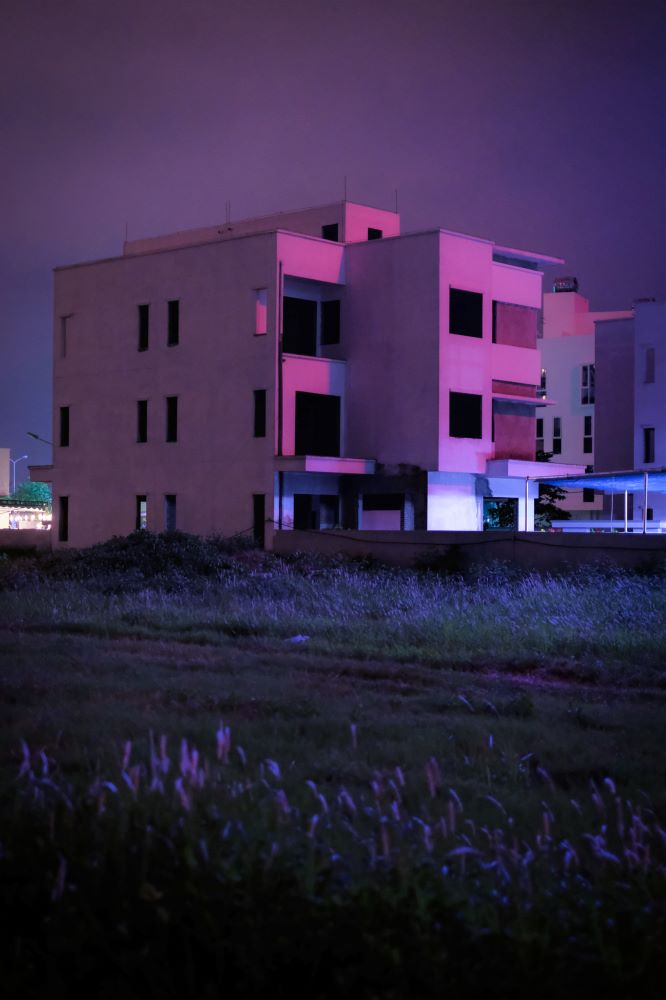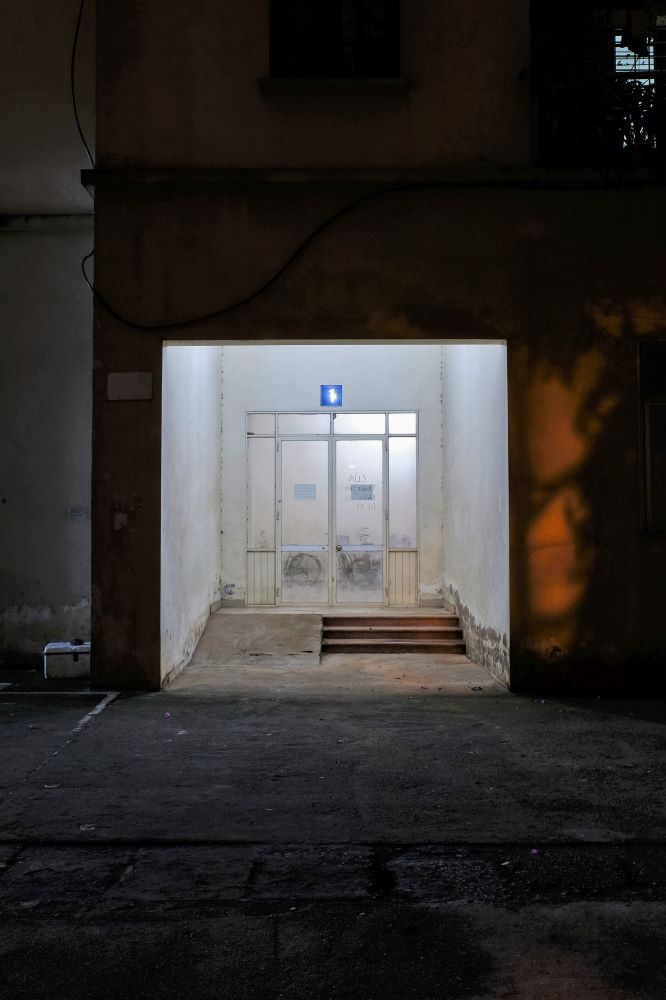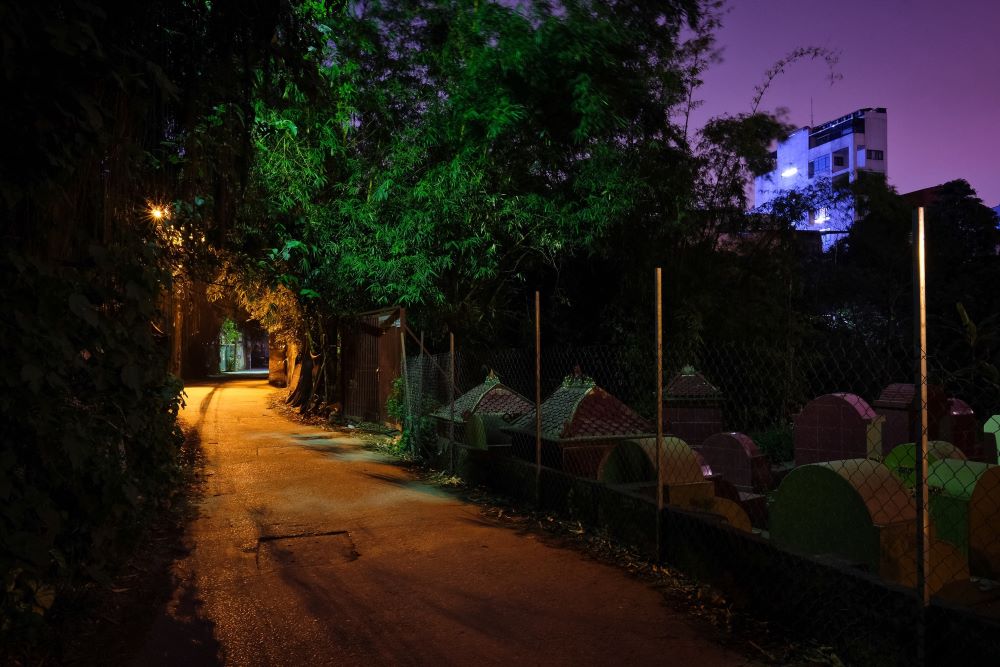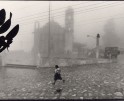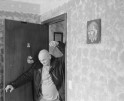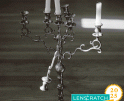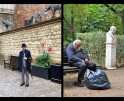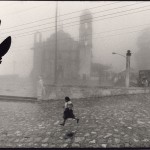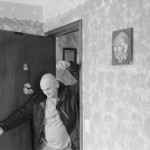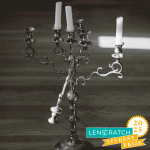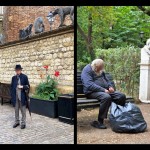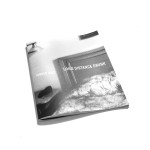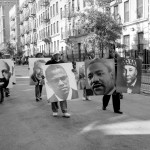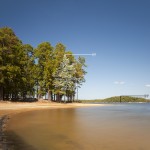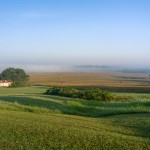Making Darkness Visible: Wouter Vanhees
As a photographer who walks my city’s streets at twilight, I’m often alone. That is why it gives me special pleasure to appear in and present a group of my fellow night photographers under the rubric, “Making Darkness Visible.” The five of us represent a variety of approaches that suggest the rich possibilities of night photography. As you will see, we work in color or black and white, and in different environments, including cities and rural or suburban areas. Wouter Vanhees and I each wander through our chosen cities, often on deserted streets, chronicling the transitions and juxtapositions of the urban landscape. Daniel Anizon seeks to recapture forgotten unconscious images by photographing the periphery of his vision as he walks at night through the countryside. Jill Waterman documents the social rituals of New Year’s Eve in different countries, celebrations that fill the darkness with artificial light. MJ Sharp takes as a theme, what most of us implicitly believe, that the darkness of night is a precious and endangered resource. Her nighttime photographs of ancient stone monuments in Cornwall, UK, are lit by moon and stars. And finally, all of us hone our night vision and, in Jill Waterman’s words, rely on our “camera’s ability to record things that are beyond the capabilities of human [sight]” to make the darkness visible.
Wouter Vanhees (1978) is a Belgian photographer, based in Asia since 2015.
Life in Hanoi sparked an interest in the rapid rate of urbanization of Vietnamese cities and the social implications this creates. Change, transformation and growth are recurring themes in his artistic work.
Wouter’s work has been featured at the Belfast Photo Festival 2021, Jakarta International Photo Festival 2021, OpenWalls Arles 2020, Matca Space for Photography, the Angkor Photo Festival and Workshops 2019, The Washington Post, Corriere dela Serra, VICE Asia and L’Oeil de la Photography among many others.
Wouter published his debut photobook ‘Hà Nội – Wednesday, 10:43 p.m.’ in September 2020.
American Suburb X reviews the book as follows: “Different from the traditional mode of night photography captured over a century and a half of the medium’s life, is that Vanhees captures a city not so much in change, as he captures it being built from the hinterlands of the city’s edges to the urban rise of dwellings, empty but for a moment.”
and…
“… what unfolds throughout the pages of the book is a gem-like series of images that highlight color and periphery, giving Hanoi a nearly supernatural effect. Western artists like Greg Girard have explored this theme for over 40 years, but it is refreshing to see the city at this particular moment through Vanhees observations.”
Wouter’s book was also included in the list of “Interesting Artist and Photographic Books for 2021″ by The PhotoBook Journal.
Follow Wouter on Instagram: @woutervanheesphotography
‘Hà Nội – Wednesday, 10:43 p.m.
Hanoi is shedding its skin. So what to make of its spirit?
I attempt to answer that question at night. Wednesday night around 10:43 p.m. to be precise. That’s the moment when the stars of work, family, and personal time align. That’s when I take my trusty old scooter and head into the city.
There’s no plan and no predetermined route. I don’t know what I’ll find, nor what I’m looking for. I’m not sure where I’ll end up. But that’s ok, because I have my camera with me. That’s my protective armor, the only pretext I need to venture out.
Hanoi’s cool night air is curious. In wintertime, it’s translucent at best. It lets the city’s shapes, forms, and colors pass through, but leaves many blanks to be filled in.
I want to understand this city. There’s order in its chaos. There’s stillness in its noise. There are so many shades to its darkness. And it’s changing so fast. Houses, alleys, and entire wards disappear, with towers, streets, and new urban areas taking their place. It’s hard to come to grips with this transformation, not understanding what was in the first place, let alone what is to come.
So I look for visual clues: lights, shadows, and colors that take me by surprise. Perhaps when these elements come together in an image, the veil of dust and fog is lifted, ever so slightly.
The search might be futile. But there’s a sense of serenity to whatever it is I’m doing, something I try to repeat as many times as possible in the few hours available to me. It’s comforting, and provides me with a form of freedom which is hard to come by. As I navigate these empty avenues and alleyways, I tell myself, “count your blessings”.
So every Wednesday night, around 10:43 p.m., I count my blessings…
Posts on Lenscratch may not be reproduced without the permission of the Lenscratch staff and the photographer.
Recommended
-
Suzanne Theodora White in Conversation with Frazier KingSeptember 10th, 2025
-
Jake Corcoran in Conversation With Douglas BreaultAugust 10th, 2025
-
Student Prize 2025: Top 25 to WatchJuly 20th, 2025
-
MOPD Reviews: Paul Stein: Nothing Is RevealedJuly 2nd, 2025
-
Jordan Gale: Long Distance DrunkFebruary 13th, 2025

